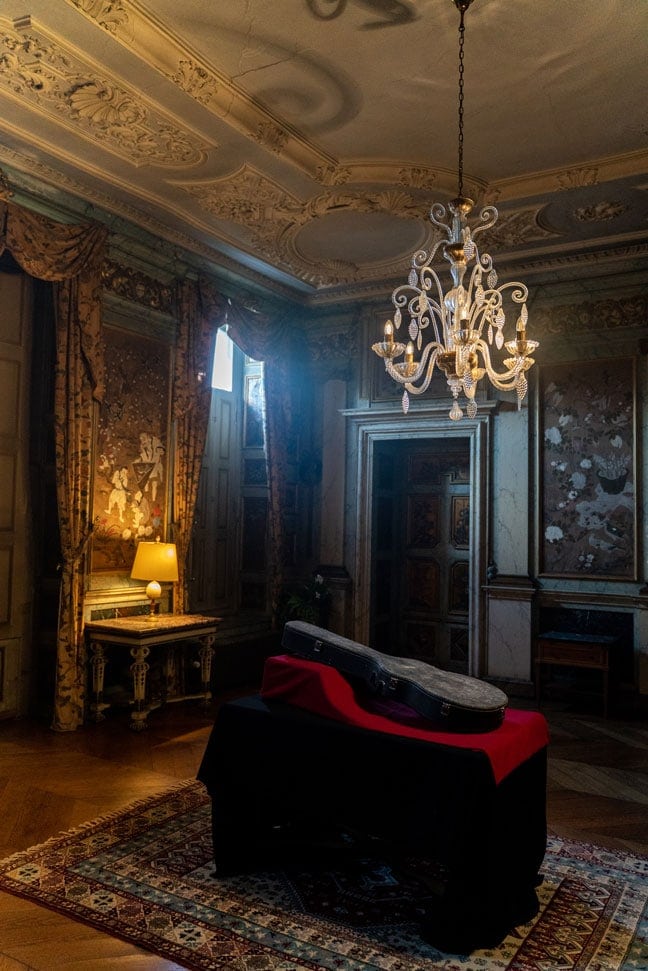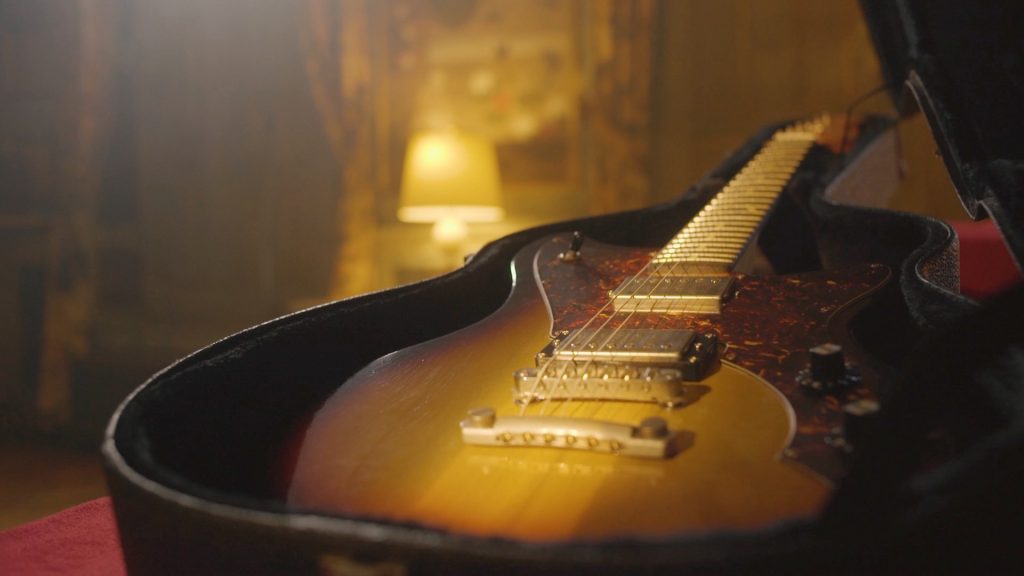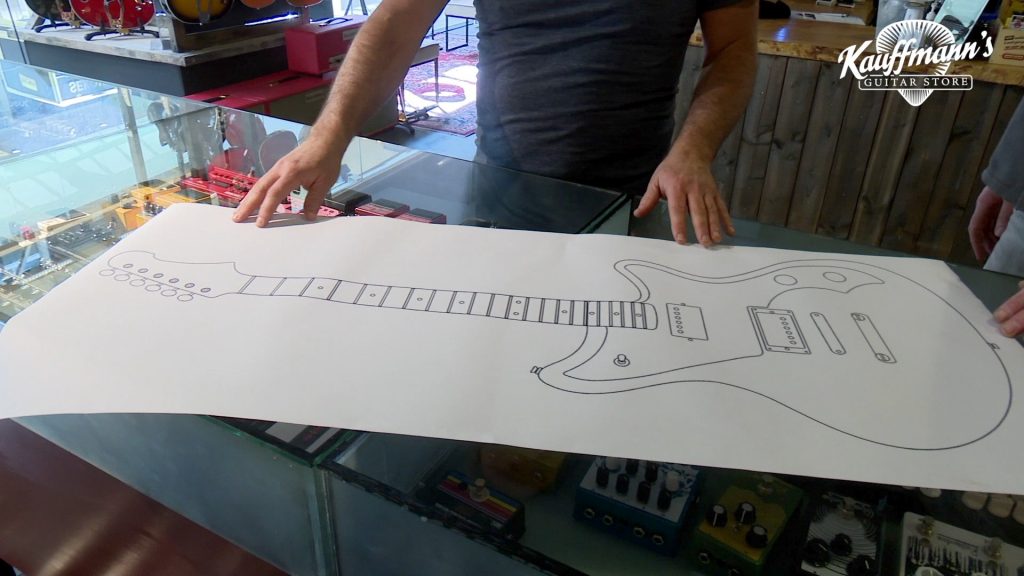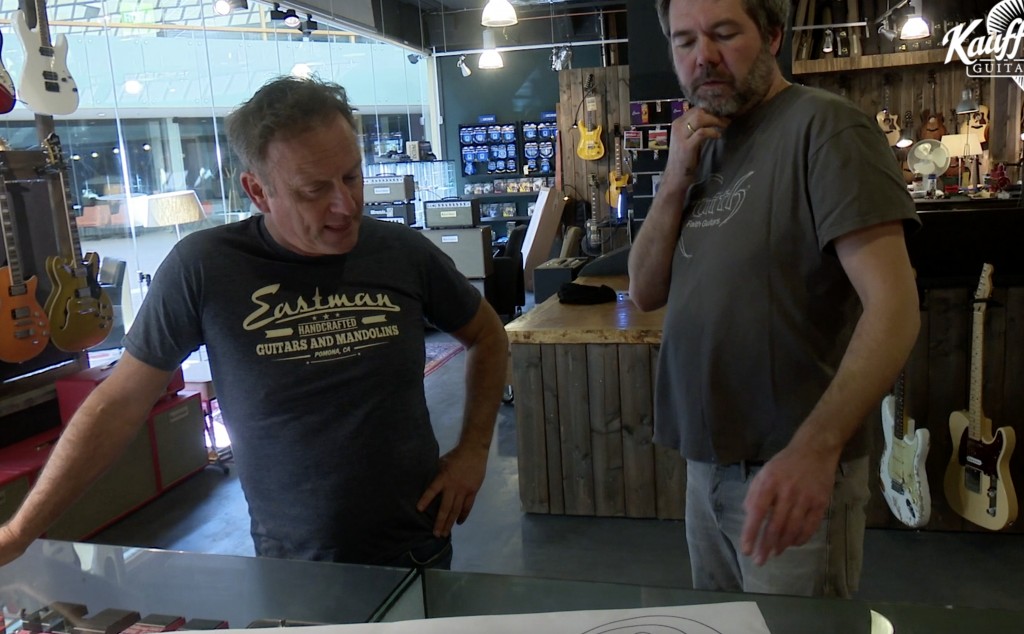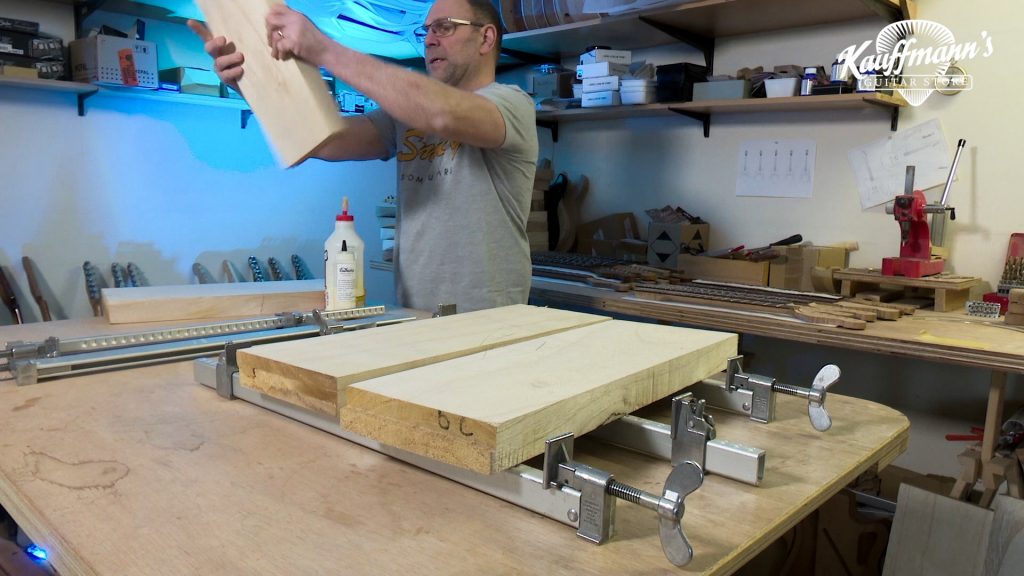PART 1: THE SEARCH FOR EUROPE’S LOST ICONIC GUITAR
A great guitar usually has a great story. A tale of its creation, of how it came to be. Of course, the story would not be complete without telling you about the players it has had. How they used it to sing their songs, took it on the road with them and created musical history. It should also have a story about its creator. And how he defied the odds, battled natures laws and physics just to transfer his vision to something tangible. Something we can see, hear, and touch. Something to long for, something to desire and maybe even fall in love with. This is that story about the Cozy.
Cozy’s designer was a countess, a rebel and a she.
Fun fact is that the original Cozy was not created by a he. It was created by a she. And about her we have quite a story to tell. Her name was Cosette Gemuttlich. She was born in Germany but she grew up in France. She was the daughter of a rich German industrial Werner Gemuttlich. He made his fortune in iron and steel business that flourished in the nineteen forties and fifties. First producing the steel to start and end the war. And after that everybody needed steel to rebuild from the war. We could say that the war had been very kind to Werner. He married a French Countess named Henriette Angelique d’Herouville. And it was in her chateau d’Herouville that Cosette was born in 1942.
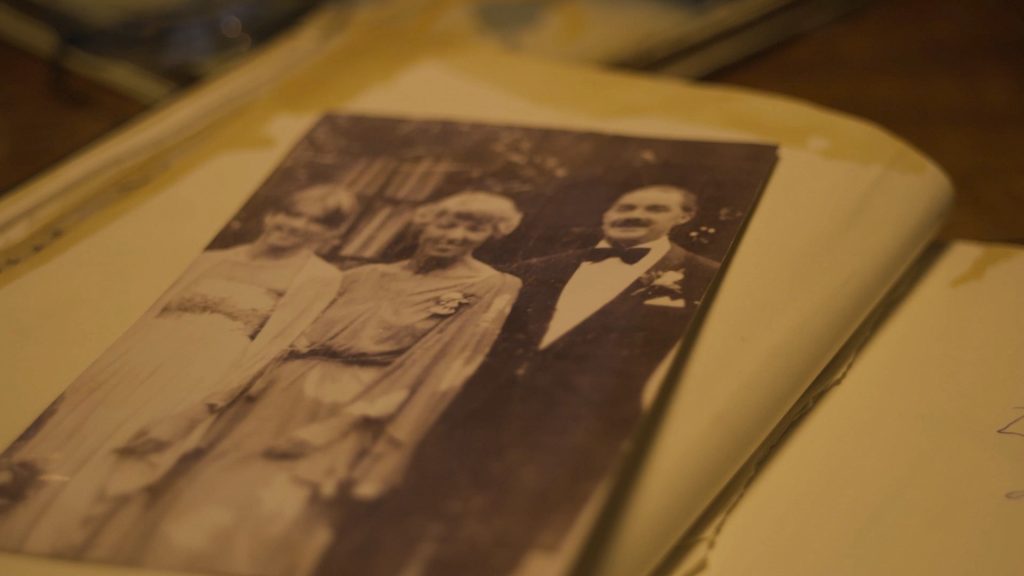
Cosette grew up in wealth and received an upper-class classical education. Not to contribute to society but to make her a marriable woman. Among many other things she learned how to play the piano. She loved music but hated the piano. And as she grew older, she started to rebel against her parents and against the society she was brought up in. She rather danced, drank and smoked with the household staff than being at the social gatherings she was expected to attend. She studied industrial design for a few years at the university of Heidelberg. But she never finished her education. Instead, she started to travel across Europe in the late 50’s.
It was during that period that she learned how to play the guitar and started hanging around the early European pop music scene. Spending most of her days in London she met some of the musicians that would later become known as the British invasion. As importing guitars from the US was prohibited at the time, European guitarist were having a hard time laying their hands on good guitars. Fender and Gibson were considered the real deal but actually playing one or even owning one was not easy in that time.
Designing and building the ‘perfect guitar’.
So Cosette decided to put her industrial engineering knowledge to practice. Together with some guitarist friends they began to imagine the ‘perfect guitar’. Borrowing generously from Gibson and Fender designs they experimented for a couple of months until a guitar emerged that looked good enough to actually try and build a prototype for. Money was a serious issue. Of course, none of the musician friends had a dime to spare. And daddy had become sick and tired of Cosette’s bohemian rebel lifestyle and had cut her off financially. So with great effort Cosette managed to beg, steal and borrow the 300 pounds needed to build four prototype guitars.
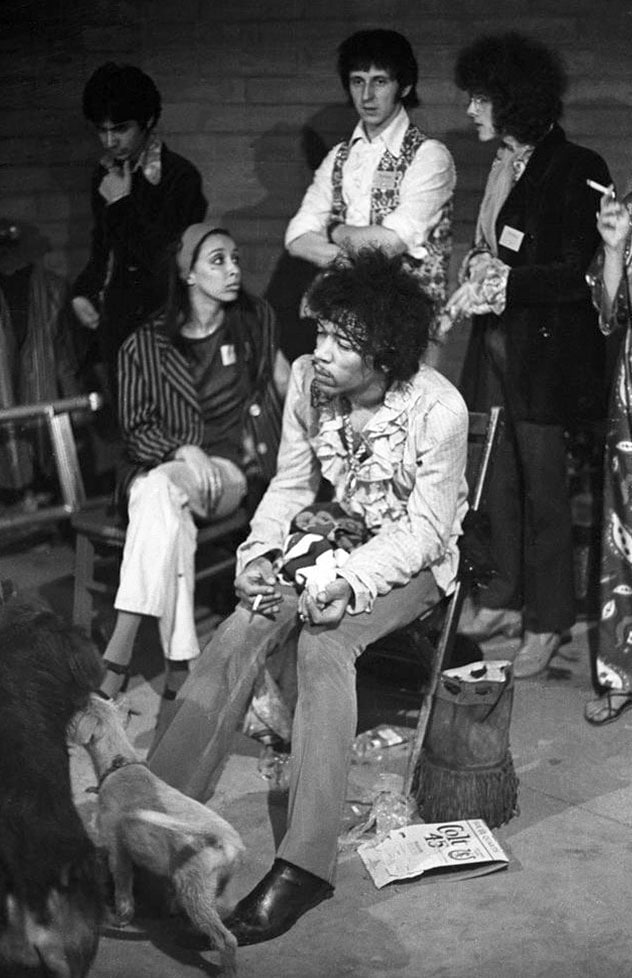
First guitars
The first guitars build had the typical offset body shape with deep body contours and a bold on neck. And it came with humbucker pickups which in those days were the latest innovation in electric guitar design. She could not decide on a bridge configuration, so she experimented with various bridges on those early guitars. From what we can reconstruct; two of them had tunomatic bridges, one had a tremolo system in a cavity in the body much like the stratocaster, and the fourth was equipped with a bigsby tremolo and probably a tunomatic bridge as well. Details on which pickups were used in those early guitars were lost. As were most of the guitars themselves.
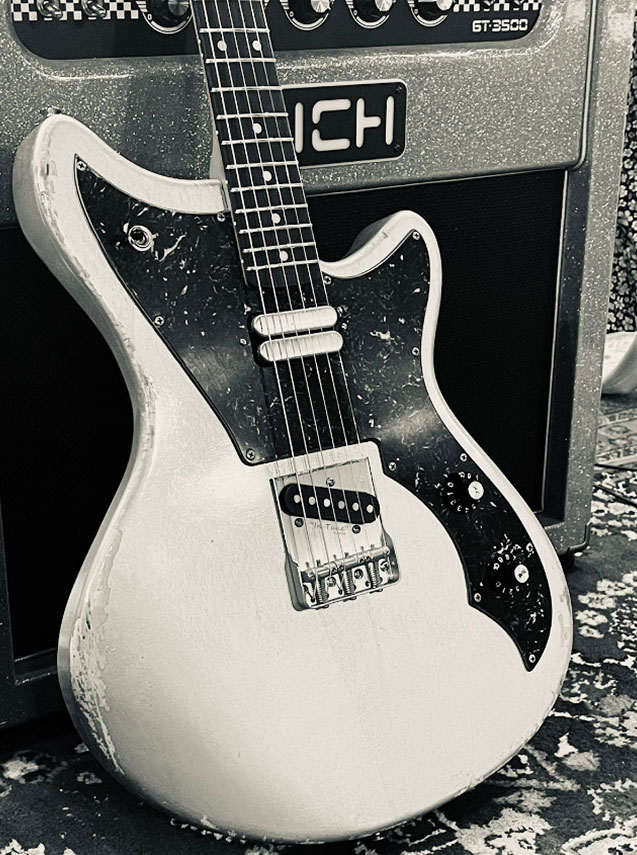
Early players
Having built four prototype guitars, she needed to find a way to raise money to start larger scale production. Progress was slow. Few people at that time in Europe thought that investing in guitar production was a good idea. As there was so much other things Europe needed such as housing, refrigerators, and cars. She thought some exposure for her guitars would help.
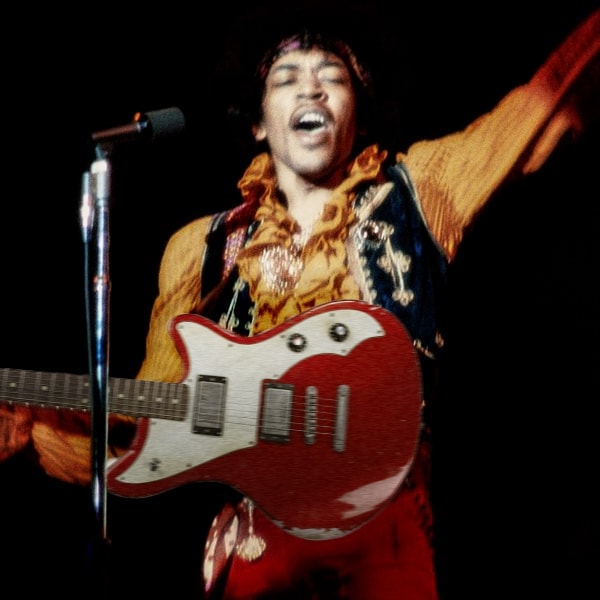
And that is exactly how two of the guitars ended up. One was set on fire during a pop festival at Monterey. The other was smashed into an amplifier. We believe that the pictures tell this sad story very well. A third guitar was given to a British blues player who later moved to the US and lived in California and later New York. His drug habit forced him to sell of a lot of guitars in the late seventies. And among the sold of guitars was his Cozy. The guitar vanished from sight for nearly two decades and then emerged again in Seatle where a young angry grung rock frontman bought it at a garage sale for 25 dollars. His later stage performance would include self-destructive dives into the drumkit.
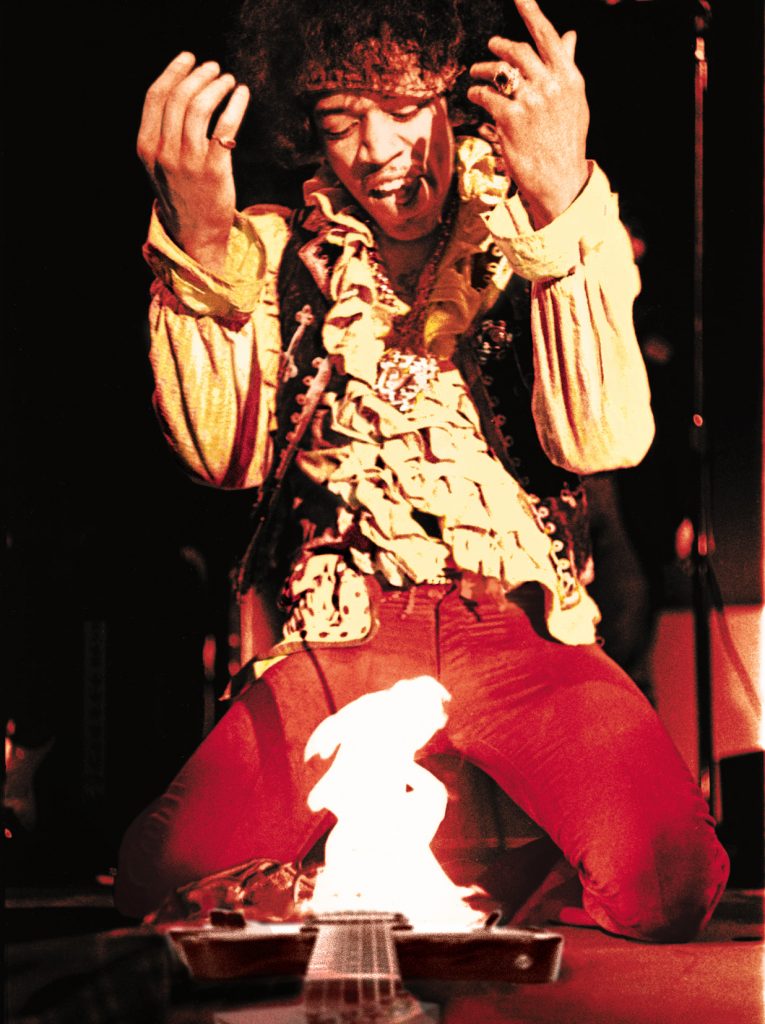
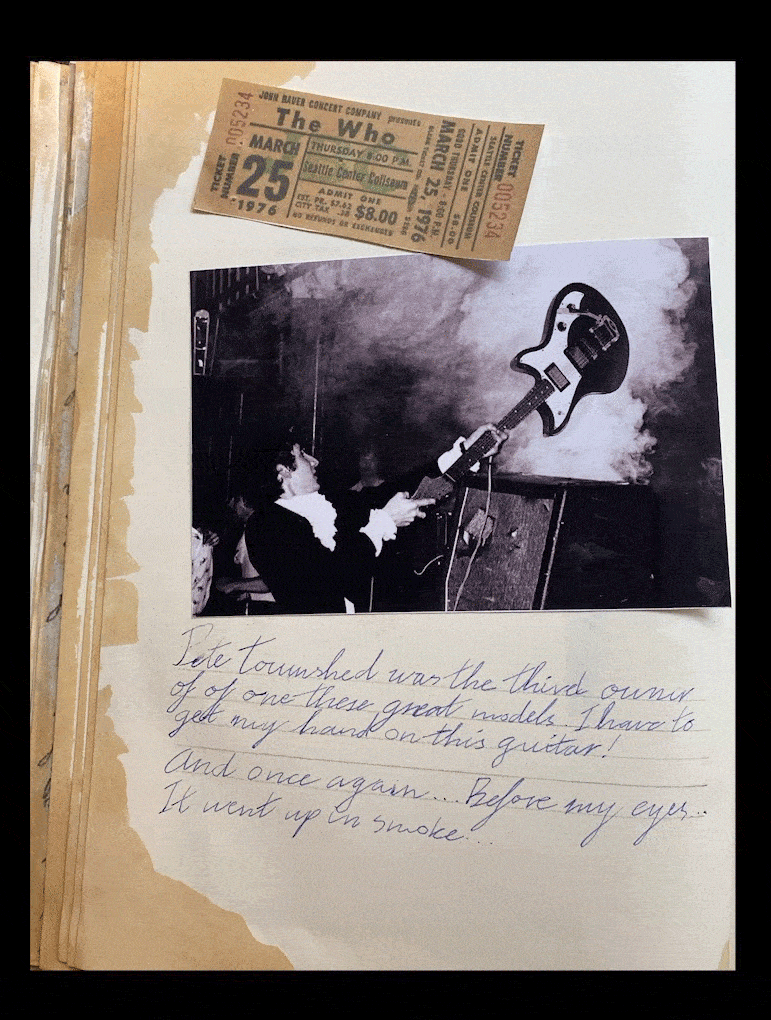
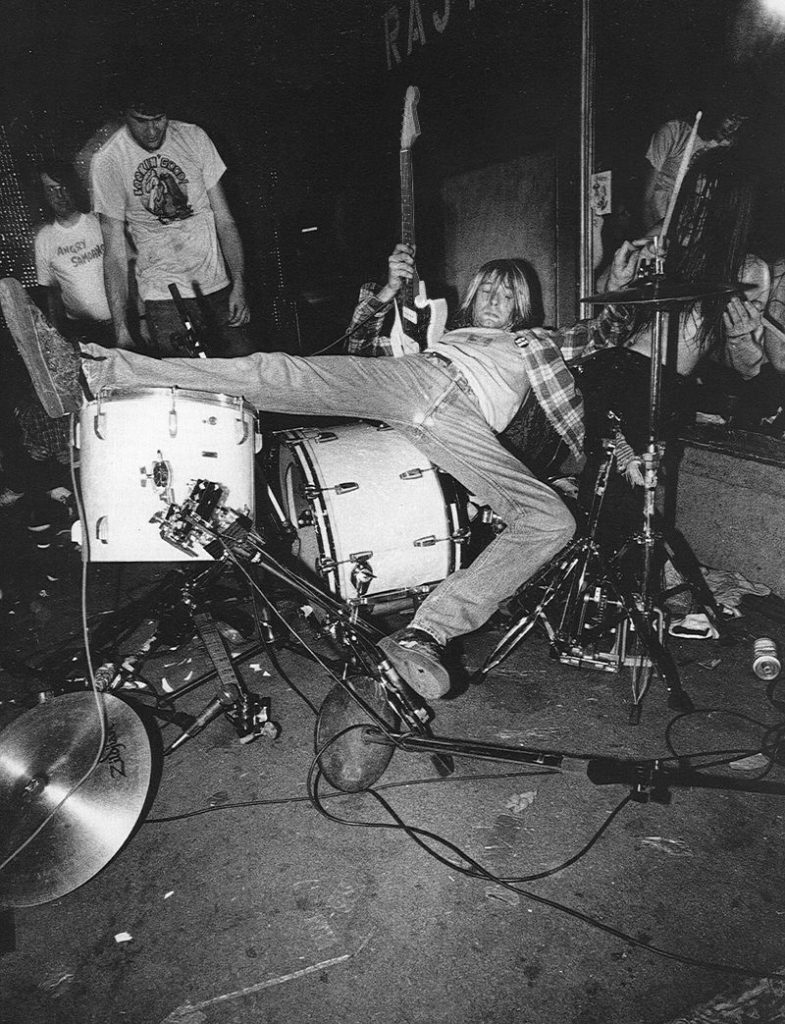
Last remaining guitar
By the mid-sixties Cosette had lost all interest in building guitars. She went home to d’Herouville for a short while. Made her peace with her parents, and her daddy’s checkbook and moved on to the US. There she settled down on a small farm in the Midwest. And that is the last we know of her. Her farm was sold in the early eighties and Cosette vanished from public sight. Most guitar experts believed that the last Cozy guitar was also to be found in the US. The name d’Herouville was mispronounced and written down as Dereville. So, for decades it was believed that Cosette and the last guitar moved to Dereville.
Solving the puzzle
Enter Karl Kauffmann, a serious guitar collector and connoisseur. He owns one of the largest collection of guitars in Europe. His greatest passion is to trace back guitars to their roots. And around 1975 he came across a picture of one of Cosette guitars. He then started tracing its history of Europe’s lost iconic guitar. He started looking in old archives for photographs of concerts in London in the sixties.
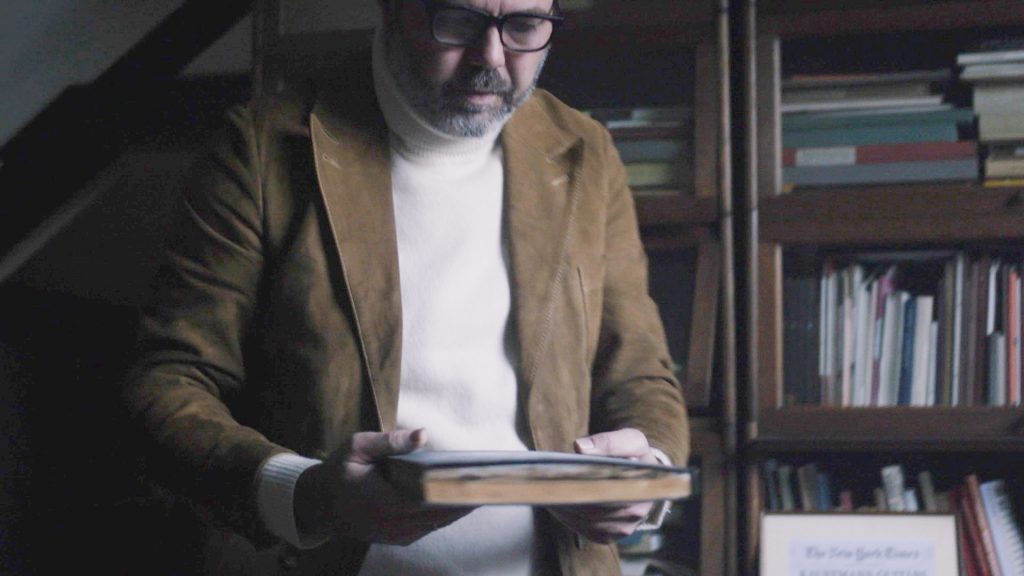
When he found a picture of the guitar, he would try to contact the artist and interview him. He tried to contact Cosette herself and it is believed that he did succeed and visited her. By that time Cosette had inherited her parents chateau and turned it into a recording studio. There she reunited with her old friends. Some of whom had become big names in music, and many ended up recording some of their most famous albums at chateau d’Herouville.
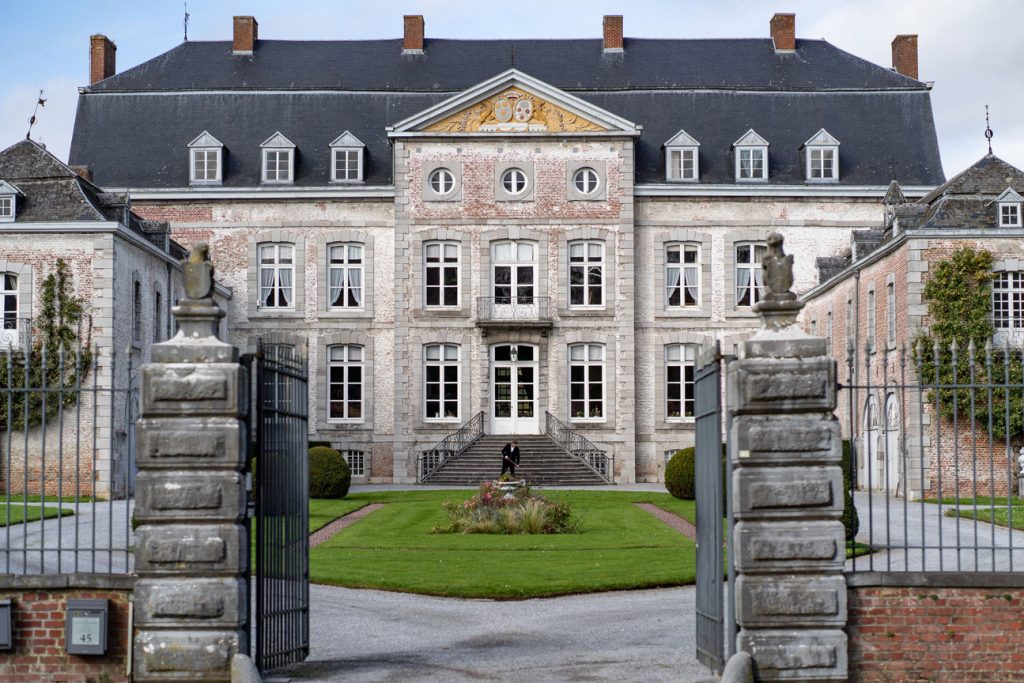
When the first big wave of pop music faded out and was replaced by disco music d’Herouville lost its magic. Fewer and fewer stars visited. Cosette decided once more to move on to other things. She left d’Herouville for the US, never to return and left the last guitar at the chateau. She left the guitar in the caring hands of Guillaume, a caretaker at the chateau. Some sources say that Cosette and Guillaume had a stormy love affair when they were both in their teens. But that has not been confirmed. Cosette was well aware of the mystery that she had created. So, she wrote to Karl Kauffman telling him that the last guitar was now his to have as part of his collection. And along with it she sent him her notebook, with her notes on the guitar. But by then Karl’s health had left him and he never made it back to d’Herouville to claim his guitar. That final piece of the quest was left to his son, Kauffmann jr. He inherited both his father’s guitar collection and his passion for guitar history.
Finding Cozy
Kauffmann Jr. made it back to d’Herouville in 2021. With the help of Dustbin Derek, a reporter for Backwards Guitar Magazine who did an interview with Kauffmann Jr at the time, they finally began to understand the full history.
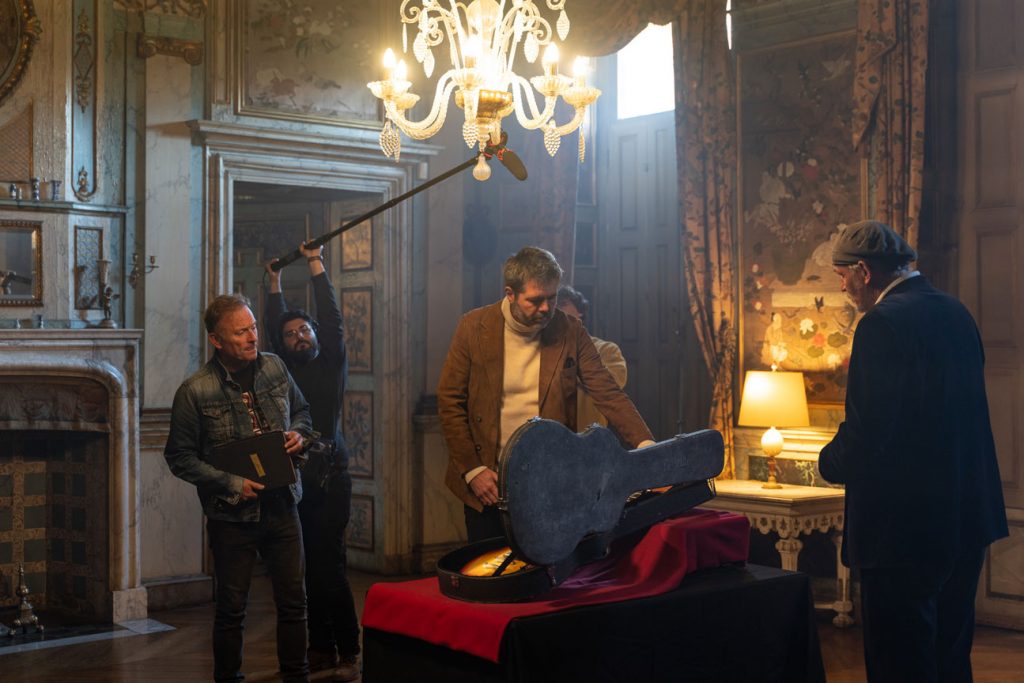
They made the trip to d’Herouville accompanied by the video crew of Backwards Guitars magazine. There they met up with Guillaume the caretaker of the chateau. This is when all the pieces of the puzzle fell in place and Kauffmann Jr. was able to connect Cosette Gemutlich to the Cozy guitar and trace its complete history and tell the story of Europe’s lost iconic guitar. The whole thing was videotaped and made into a documentary that gives an intimate impression of the search.
